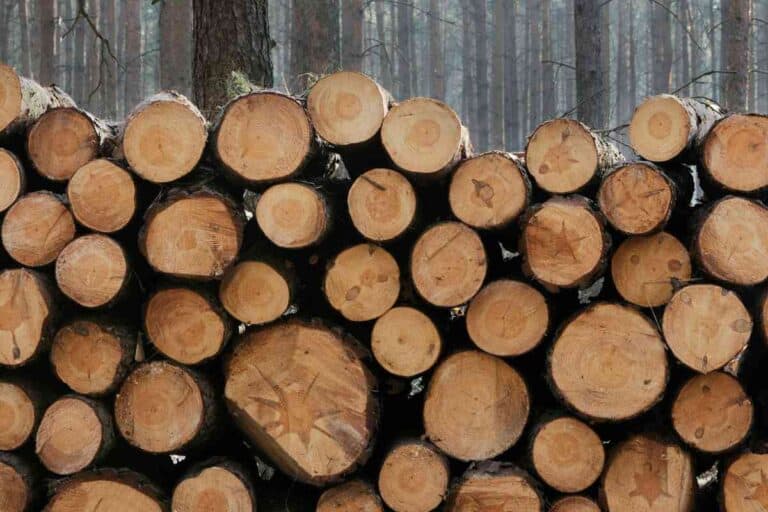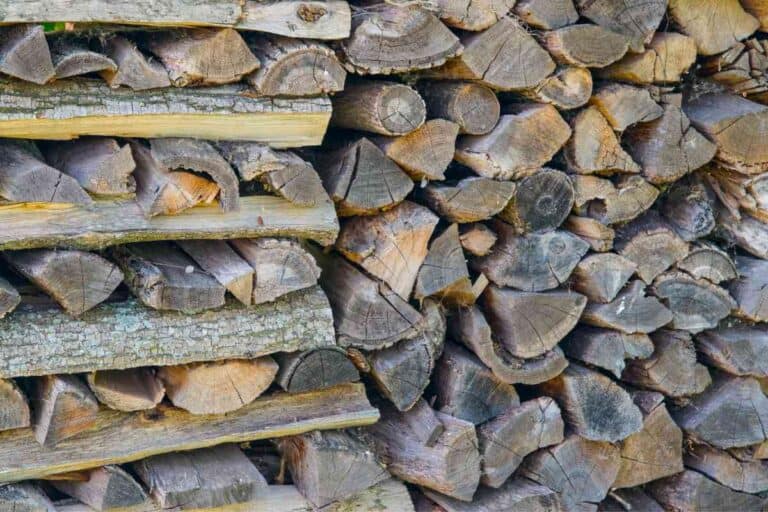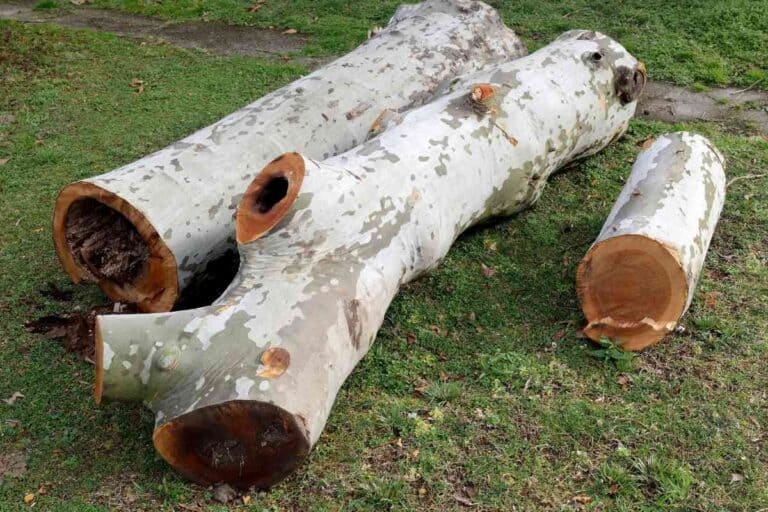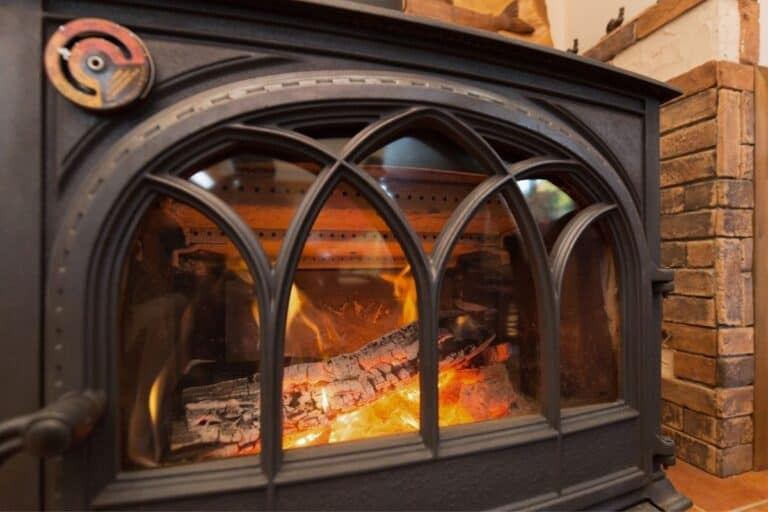Does a Wood Stove Need a Damper?
At first glance, wood stoves might seem overtly simple in their design, depicting little more than a hollow box with a long vertical pipe connected to a nearby chimney or straight to the outdoors. However, despite appearances, there are numerous parts that are essential to a wood stoves functionality, but with the rise of modern wood stoves featuring innovative designs, owners are wondering if dampers are still as crucial as they were when wood stoves were first created.
Whether a wood stove needs a damper relies largely on the model and its overall design. Many modern wood stoves don’t need dampers to function properly, but older models require this valve to help regulate air flow and promote efficient heat output.
In this article, we’ll more clearly explain how you can tell if your wood stove needs a damper and why this component is crucial to the models that can’t function properly without them. As you read, we’ll also answer common questions such as how an open or closed damper affects temperature and how a chimney without a damper affects whether your wood stove needs one.
What Is a Flue Damper and Are They Necessary?
If you’re unfamiliar with the components of your wood stove, you might be wondering what a flue damper even is, let alone its purpose and relevance.
A flue damper is a small metal on a spindle that is installed within your wood stove or chimney’s flue system.
The device is connected to a turnable knob (or a similar mechanism0 that allows you to move the damper to a vertical position, effectively opening the flue system and permitting air in and out or moving it to a horizonal position to close the system, keep air contained indoors, and block outdoor air from entering.
Centuries ago, when the first wood-burning stoves were invented, this small mechanism was crucial for its ability to help homeowners regulate airflow and heat retention more efficiently.
Back then, when a fire was raging inside the wood stove, you would open the flue damper to allow smoke to travel up the chimney and outside. When the wood stove wasn’t in use, you would close the flue damper to prevent cold air from entering the building.
While flue dampers are still a common fixture in old chimneys and wood stoves, the question here is whether they’re essential or not and, as we stated previously, the answer truly depends on the wood stove model you have.
The Modern Wood Stove
If you’re fortunate enough to be purchasing and installing a brand new (or relatively new) wood stove, then congratulations, you probably don’t need to worry about dampers of any kind.
Modern ingenuity has resulted in a complete redesign of wood stoves that doesn’t even require chimneys, much less a flue damper.
The reason for this is that these new models are infinitely more efficient at extracting and retaining heat and controlling air flow, as required by modern-day emission regulations. Smoke produced by wood stoves contains harmful particles that negatively impact air quality and contribute to the overarching issues of global warming and other environmental issues.
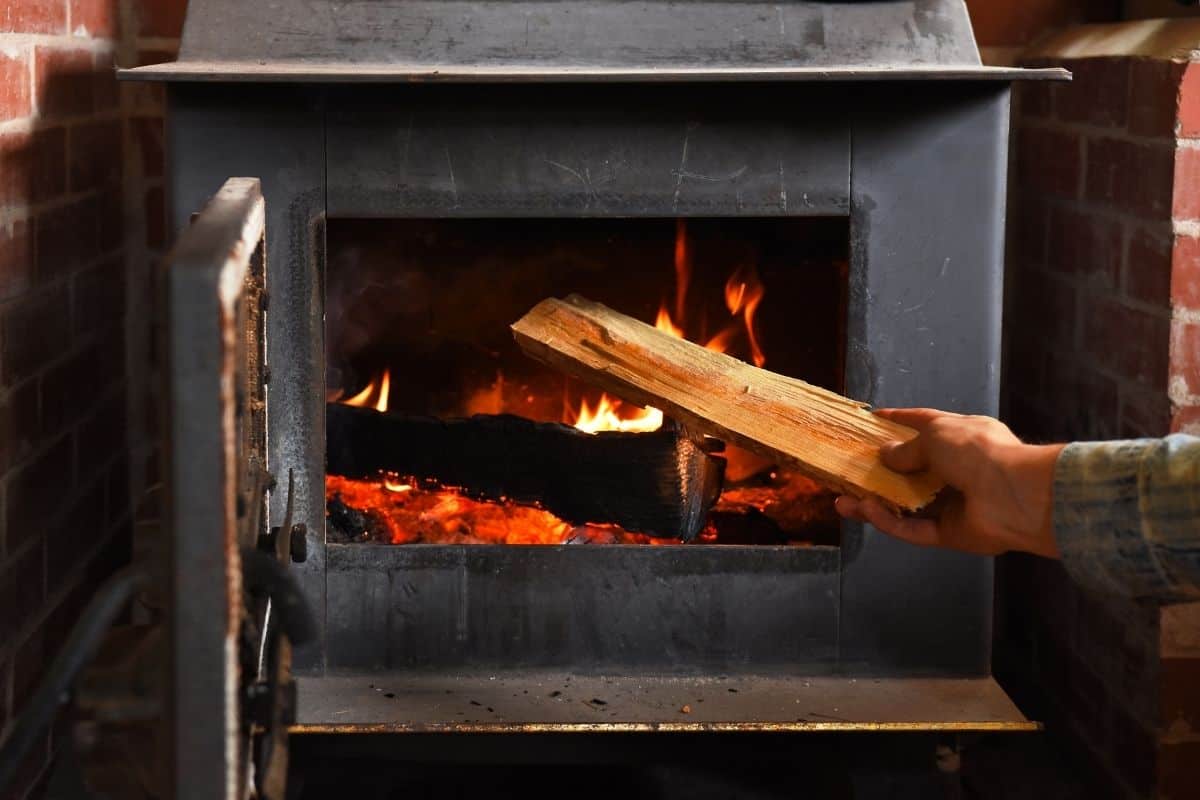
To solve this issue, you’ll find that modern day wood stoves are still designed with a flue system (whether they’re attached to a chimney or not) to remove the minimal smoke it emits, but instead of featuring a flue damper, the system relies heavily on air vents.
When Should You Damper a Wood Stove?
To reiterate, if you have a modern wood stove, it is unlikely you’ll need to use a damper at any point, but what if you have an older wood stove that features a damper in its flue system or within its connected chimney? When is the best time to use it for the sake of safety and efficiency?
If your wood stove and/or its connected chimney already features a damper within the flue system, it is essential that you use it. Any time you have wood burning within the wood stove, your damper should be open so that fumes may exit the building through the flue system rather than seeping inside.
Using the wood stove without opening the damper significantly increases your risk of a fire hazard and could even lead to carbon monoxide poisoning if its harmful fumes build up and linger inside.
Another reason why you’ll need the damper open is that it will allows you to control how much air enters the system from the outdoors. This, in turn, allows you to control how intensely your wood stove fire burns. The more open you set your damper, the more oxygen is able to enter the wood stove’s fire box and fuel the flames inside.
The result is a hotter fire, which might be beneficial if you’re trying to warm a room on a particularly cold evening, but it will also cause the fire to burn through its fuel faster, so you’ll need to be vigilant of your wood supply.
What If My Chimney Doesn’t Have a Damper?
Unless you have a modern ventless or electric fireplace, then it is relatively uncommon for it to be built without a damper. That being said, some very old fireplaces might be damper-less, or perhaps the one your fireplace was initially fitted with simply broke. The question now is how this will affect your wood stove.
Wood stoves and fireplaces can function without a damper. The damper itself does not impede a wood stove’s ability to burn or a chimneys ability to channel air and other gases, it merely provides you with the ability to control flame intensity and temperature while also controlling the flow of smoke emissions.
So, while it isn’t recommended to use a wood stove without a damper in its own flue system or its connected chimney, it can be done. Of course, if you have a modern wood stove that doesn’t require a damper, then it is irrelevant whether your chimney has one or not.
Should you find yourself wary to use a wood stove and its chimney without this mechanism, a replacement could easily by purchased and installed for $200-$300.
Final Thoughts
There are some features of a wood stove that are absolutely crucial to its functionality, but dampers aren’t necessarily one of them.
In reality, your wood stove will burn whether a damper is present or not, but failing to us a damper on a wood stove or chimney built with this mechanism will inhibit your control and increase fire related hazards. If possible, its best to opt for a modern wood stove that is more environmentally friendly and doesn’t require dampers whatsoever.
Sources:
- https://fireplaceuniverse.com/does-wood-stove-need-damper/#:~:text=Newer%20models%20of%20wood%20stove,a%20damper%20to%20perform%20well.
- https://fireplacetown.com/does-a-wood-stove-need-a-damper
- https://woodheatanswers.com/do-i-need-a-damper-on-my-wood-burning-stove/
- https://www.winstonsservices.com/importance-chimney-damper/
- https://findanyanswer.com/does-a-wood-stove-need-a-damper
- https://www.thestoveyard.com/pages/what-is-a-flue-damper#:~:text=A%20flue%20damper%20is%20a,(aka%20pull%20or%20draw).

